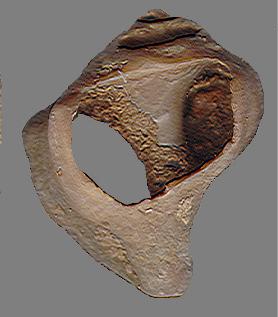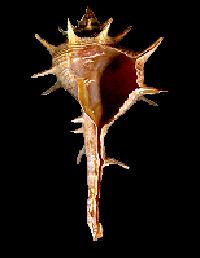Phyllonotus (Murex) trunculus

Photo-
Phyllonotus (Murex) trunculus from the Carthage excavations. The hole in the shell was done to extract the hypobranchial tinctorial gland.
Murex trunculus was the most searched of all the molluscs during more than 2 500 years for the industry of dyeing royal purple.
The shell, here, is one of the billions discovered at Carthage, city who remained one of the greatest centre of the dyeing manufactory from the Phoenician (11 centuries BP- in the Tunisian southern island of Jerba) to the Byzantine times (5 century AD- Carthage) and later (from 7 to 11 century), in the Arabic times with manufactures even in the central Tunisia, at Kairouan.
The presence in Jerba (south Tunisia) of one of the most ancient jewish community and of one of the most ancient synagogue abroad and the huge accumulations of Murex trunculus (to see them click here), used for local industry 3000 years ago, may be to put in relation with the interest of the Jews for the dye called "tekhelet" in the Talmudic tradition.
The presence at Kairouan is attested by a "purple Koran" from this city, to day stored in the "Bibliothèque Nationale " in Paris.
The commercial importance of the royal purple was attested by its price who vied in value even with the gold itself.
The three Mediterranean shells used for dyeing purple manufacture


1- Thais heamastoma from Bizerte coast

2- Bolinus brandaris from Gabès gulf
3- Phyllonotus trunculus from Jerba
to know more about Murex click here


